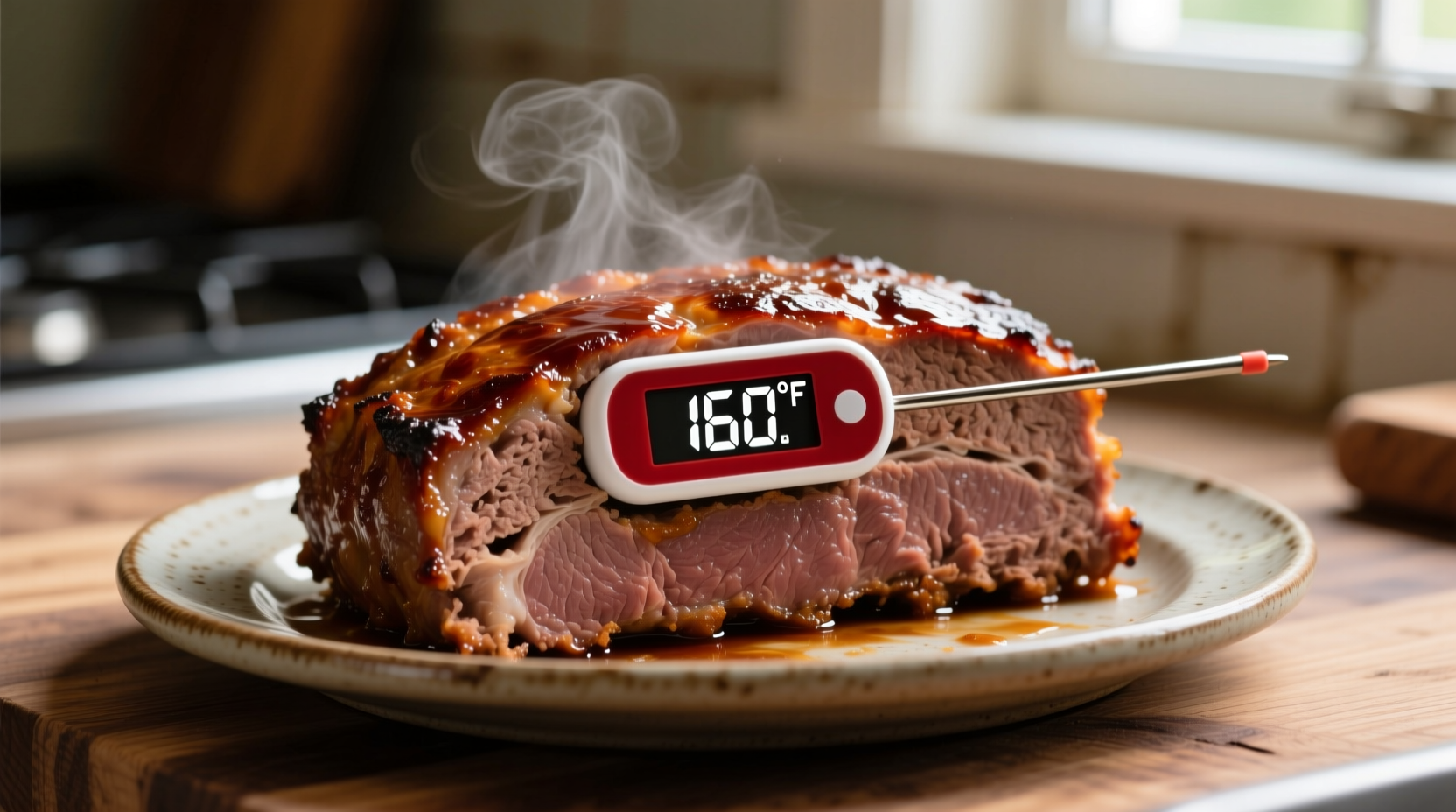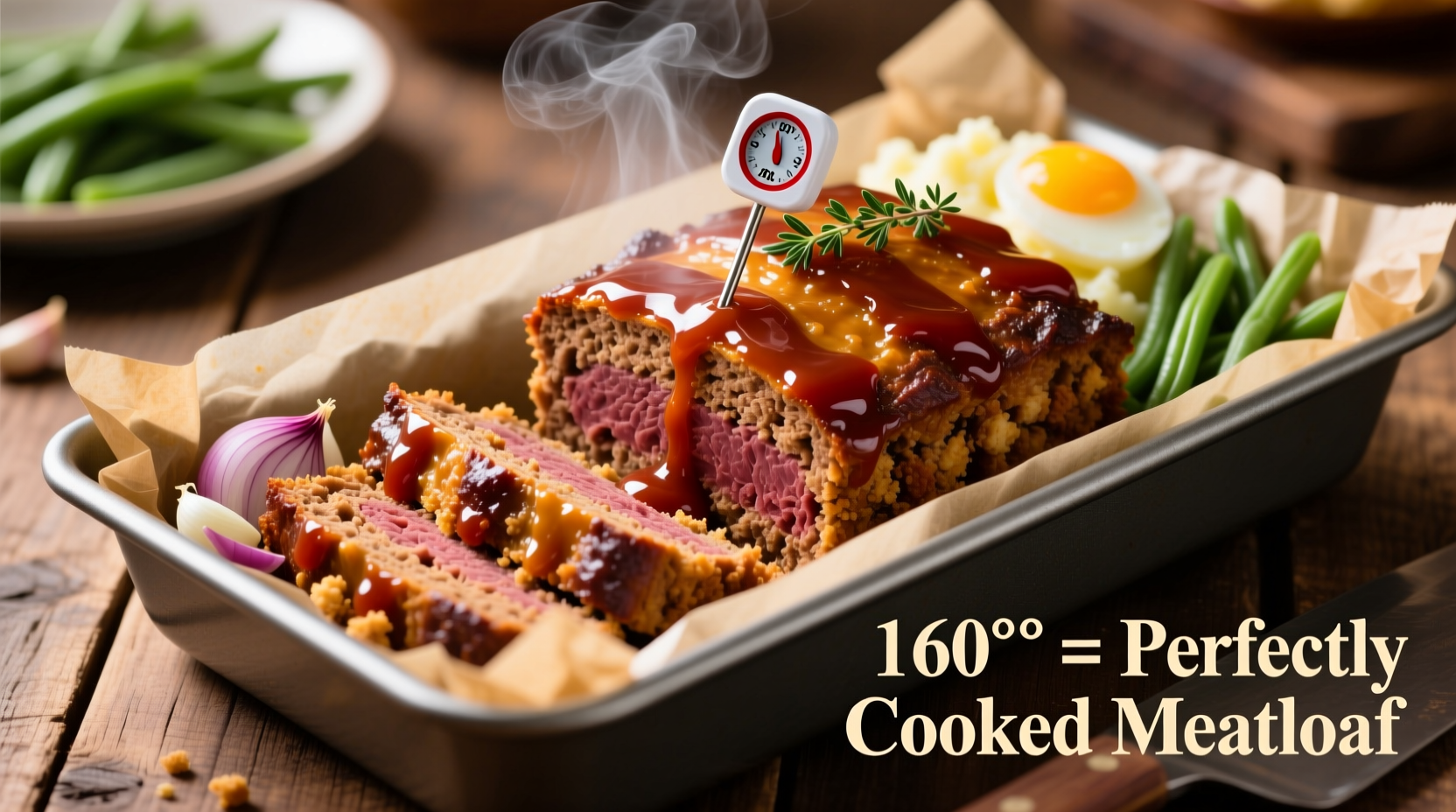Getting meatloaf temperature right separates a juicy centerpiece from a disappointing dinner. Whether you're a first-time cook or a kitchen veteran, understanding the science behind what temp to cook meatloaf at eliminates guesswork and guarantees perfect results every time. This guide delivers actionable steps backed by food safety experts—no fluff, just proven techniques that transform ground meat into tender, flavorful comfort food.
Why Temperature Matters More Than Timing
Unlike roasts or whole chickens, meatloaf's dense structure requires precise temperature control. Ground meat harbors bacteria throughout (not just on the surface), making internal temperature critical for safety. The USDA's Food Safety and Inspection Service confirms ground beef must reach 160°F to destroy harmful pathogens like E. coli. But here's what most guides miss: oven temperature directly impacts texture.
| Meat Type | Safe Internal Temp | Recommended Oven Temp |
|---|---|---|
| Beef/Pork/Veal Blend | 160°F (71°C) | 350°F (175°C) |
| Ground Turkey/Chicken | 165°F (74°C) | 375°F (190°C) |
| Game Meats (Venison) | 160°F (71°C) | 325°F (163°C) |
Source: USDA Food Safety and Inspection Service (2023)
Your Step-by-Step Cooking Path
Prep: The Thermometer Check (2 Minutes)
Before touching your oven, calibrate your instant-read thermometer. Insert the probe into ice water—it should read 32°F (0°C). This ensures accuracy when checking meatloaf internal temperature. Skip this, and you risk undercooking or drying out your loaf.
Cook: Oven Setup & Timing (45-60 Minutes)
Preheat to 350°F—not higher. Higher temperatures (like 400°F) cause exterior overcooking before the center reaches 160°F. Place meatloaf on a rack in a roasting pan (not loaf pan) for even air circulation. Bake 45-60 minutes for a standard 2-lb loaf. Start checking at 40 minutes:
- Insert thermometer into the thickest part, avoiding fat pockets
- If using a convection oven, reduce temp by 25°F
- For glazed meatloaf, add sauce during the last 15 minutes

Rest: The Non-Negotiable Pause (10 Minutes)
Resist cutting immediately! Resting allows juices to redistribute. Tent loosely with foil and wait 10 minutes—this lifts internal temperature 5°F while preventing dryness. Skipping this wastes your perfect oven temp for meatloaf efforts.
Avoiding Common Pitfalls
Scenario: Your meatloaf hits 160°F but seems underdone.
Solution: Check fat content. Lean blends (<15% fat) cook faster but dry out easily. Add 2 tbsp broth per pound next time. For high-fat blends, drain excess grease halfway through cooking.
Scenario: Uneven cooking in loaf pans.
Solution: Switch to free-form loaves on baking sheets. Confining meat in pans traps steam, creating a steamed exterior while the center lags. This meatloaf cooking temperature guide works best with direct oven exposure.
When to Adjust Standard Temperatures
While 350°F/160°F is ideal for most recipes, these meatloaf temperature variations require tweaks:
- Large loaves (3+ lbs): Reduce oven to 325°F to prevent crust formation before center cooks
- Meatloaf muffins: Increase to 375°F; check at 20 minutes (target 160°F)
- Smoked meatloaf: Maintain 225°F smoker temp until internal reaches 155°F, then finish at 350°F
Always verify with a thermometer—visual cues like clear juices are unreliable for ground meats. The CDC confirms color isn't a safety indicator; 160°F is the only reliable standard.
Pro Tips for Foolproof Results
- Chill before baking: Refrigerate shaped loaf 30 minutes to prevent spreading
- Test small portions: Bake a golf-ball-sized test patty first to check seasoning
- Use a water bath: Place roasting pan in larger pan with 1" hot water for moist heat











 浙公网安备
33010002000092号
浙公网安备
33010002000092号 浙B2-20120091-4
浙B2-20120091-4